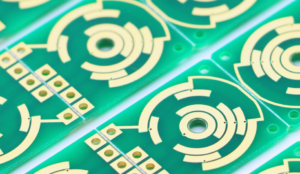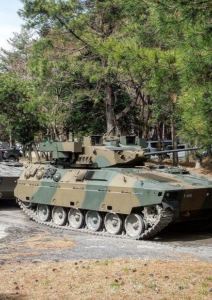We’re all surrounded by electronics. Electronics is at the core of modern technology. Electronics power everything, from cellphones to industrial gear. The PCB, or printed circuit board, is crucial to their design. As a result, PCBs serve as the electronic devices’ nerve centers. Today, in the field of PCBs, there is a word known as “Thick copper PCB.”
What precisely is a thick copper printed circuit board? Why is it so crucial in today’s world? This article will provide the answers to all of these questions. The article focuses on the principles of thick copper PCBs. It will also help you pick the appropriate copper thickness for your PCB.
What is a Thick Copper PCB or Heavy Copper PCB?
Copper’s typical thickness on PCBs is between 1.2 mills (35 µm) and 2.8 mills (70 µm). A PCB is considered thick or heavy copper when this thickness exceeds 100 µm. Generally, thick or heavy copper PCBs range from 100 to 500 µm.
This increased thickness in the copper layer improves the ability to handle high current loads. Also, they are great for enduring high thermal stress. However, the following are the critical properties of a heavy copper PCB:
- Thicker copper layers of PCB can transport greater electrical currents.
- Heavy copper PCBs offer enhanced heat dissipation benefits. They provide superior thermal conductivity. Because of this feature, your PCB can quickly transfer away the heat generated by the PCB components. As a result, your PCB remains free from overheating.
- Thick copper plays a big role in the PCB’s rigidity and construction. It is less likely to be damaged mechanically and is especially useful in tough conditions, such as extreme heat or vibration.
- Thick copper PCBs can improve your PCB’s reliability for two reasons: They offer improved electrical connections and may also help prevent conductor failure.
- A heavy copper PCB can ensure a longer lifespan when all the above benefits are met.
Limitations of Thick Copper PCB
Although thick copper PCB offers many benefits, it still has some limitations. These limitations significantly affect investments in high production volumes.
(1) The high cost is the critical disadvantage of using thick copper PCBs. The thicker the copper, the more raw copper is needed for production, which typically increases the production cost.
(2) The design of a heavy copper PCB must be different. You must carefully consider the correct setup for the thick copper PCB. Here, you must consider traces, current loads, and heat dissipation. These three factors eventually make the design complex, which requires more expertise.
(3) Making thick copper PCB is usually a complex process. It needs extra steps and accurate etching.
(4) These PCBs often have fewer layers than standard PCBs. You can mostly find thick copper PCBs that are double-sided or single-sided.
(5) You will find that not every PCB factory can make thick copper PCBs or heavy copper PCBs. So, it will limit the sources you can use. Since finding a suitable factory is hard, the production cost might be higher. But UETPCB can help you find a cheap way to make thick copper PCBs.
Wide Application of Thick Copper PCB
Thick copper PCB or heavy copper PCB is widely prevalent in many applications. Some of the popular applications are as follows:
Power Supply System
Power supply systems often use thick copper PCBs because they can handle high voltages and currents. These PCBs also remove heat and ensure that the power is distributed well.
Industrial Machinery
Industrial machinery often has high-power systems. Depending on the size of the machine, the power ranges from 220V to 35,000V. Thick copper PCBs are extensively used for these machinery.
Heavy-duty Vehicles
Heavy-duty vehicles also use high-power components. Electric public buses, bullet trains, city trams, and mining vehicles are noteworthy examples. In these applications, typical PCBs can not handle such power.
Military Equipment
Military equipment often involves vibration, diverse temperatures, and shock. Thick copper PCBs are mainly made for these situations. They are ideal for military vehicles, communication equipment, and weapon systems.
Aerospace Equipment
The use of thick copper PCB is also widely seen in aerospace industries. It can endure extreme environmental conditions such as high altitudes and temperatures. Note that aircraft also experience strong vibrations. Therefore, thick copper PCBs are also widely used in these applications.
Electric Vehicles
The use of thick copper PCBs is also critical for electric vehicles. Since the EV is fully powered by electricity, heat is the main threat to the PCB. Heavy copper PCBs are the ideal option in this case.
How to Select PCB Copper Thickness?
When making a PCB, the thickness of the metal is critical. This becomes especially true when working with high-power uses. As you know, thick copper PCBs are often used in harsh conditions. So, you must be careful when choosing the right thickness for a PCB.
Factor #1 Determine the Current Capacity
The first thing you should consider is handling higher current loads. You need to determine the maximum current your design will require. Think of it like a pipe or hose. The larger the diameter, the more water can pass through. If you move less water, it produces less pressure. The more water there is, the more pressure there is.
Similarly, the more the current passes through the copper, the more heat can be generated. So, choosing the appropriate thickness heavily depends on the current flow.
Factor #2 Mechanical Strength
The next factor you must consider carefully is the strength of the PCB. Usually, thick copper PCBs provide greater mechanical strength. You already know that they are perfect for demanding and complicated tasks. These are such conditions as mechanical stress, vibration, and physical impact. People use thick copper PCBs in heavy-duty machinery and vehicles.
The thicker copper layers generally add more rigidity. It also makes your PCB more resistant to damage.
Factor #3 Number of Layers
Another factor that affects the design of the PCB is the number of layers present in the PCB. A multilayer PCB is a better option when it comes to complex circuit designs. In this case, much attention should be paid to the current distribution during the design of each layer. These types of boards are often suitable for thin copper PCBs.
Indeed, 2-layer PCBs are often associated with thick copper designs. This type of PCB is particularly suitable for higher current applications. Although you might also find more layers of PCB with thick copper traces, 2-layer is the most widely used.
Factor #4 Desired Trace Resistance
One of the main benefits of thick copper PCBs is low resistance. As we mentioned earlier, copper traces are like the pipes in your building pipelines. Thick copper means low resistance and, thus, low heat. Therefore, this factor must be considered to keep the electrical power transmission optimal.
Factor #5 Manufacturing Limits
As you know from the previous section, not all factories can make thick copper PCBs. Thus, knowing the manufacturing state before you finalize the design is crucial. A thick Copper and complex PCB design could restrict the product’s manufacturing to certain companies.
Factor #6 Thermal Loads
Managing thermal loads is also critical for thick copper PCBs. The thicker copper offers better heat dissipation, while the thinner makes more heat. Because of this, thicker copper traces are widely used for high-power components.
Factor #7 Cost
Finally, consider the cost of your project. Thick copper PCBs are more expensive than standard PCBs. In this case, performance requirements must be met while working within a certain cost. Of course, as you are aware, thick copper has many advantages, but it also has some disadvantages. So, always take time to select the suitable thickness of the copper traces.
Thick Copper PCB Size Chart
Thick copper PCBs come in various thicknesses, measured in mills, microns, or ounces (oz). Here’s a size chart to help you understand the common thicknesses used in PCBs.
| Oz | 0.5 | 1 | 1.5 | 2 | 3 | 4 | 5 | 6 | 7 | 8 | 9 |
| Mills | 0.671 | 1.37 | 2.06 | 2.74 | 4.11 | 5.48 | 6.85 | 8.22 | 9.59 | 10.96 | 12.33 |
| Microns | 17.05 | 34.80 | 52.20 | 69.60 | 104.4 | 139.2 | 174.0 | 208.8 | 243.6 | 278.4 | 313.2 |
(1) 1 oz copper thickness is one of the most popular. It is regarded as the standard copper thickness for regular PCBs. It is often prevalent in general electronics.
(2) 2 oz copper thickness is famous for power electronics. It is also widely used in automotive, household appliances, and other industries.
(3) 3 oz copper thickness is a thick copper PCB. The values above this level are all thick copper PCBs. It is used in industrial machinery, aircraft, and many other industries.
Summary
Thick copper PCBs are ideal for three reasons. (1) They are ideal for high-current handling. (2) They excellently dissipate heat. (3) They provide improved mechanical strength. Thick copper PCBs are generally available in various thicknesses. You don’t have to worry about finding the thicknesses; you can follow the standard table.
When selecting the right thick copper PCBs, always ensure two things: What is the maximum current load? Will your PCB often encounter vibrations and stress? The other factors can be considered later.
Contact our customer support if you have any questions regarding thick copper PCBs. If you want to make thick copper PCBs and others, UETPCB is the place for you.



